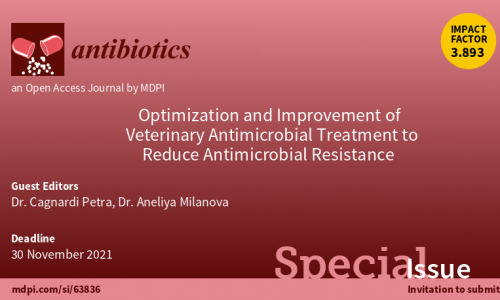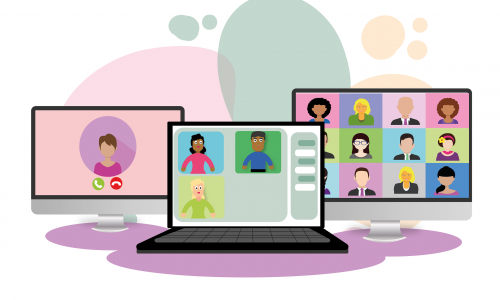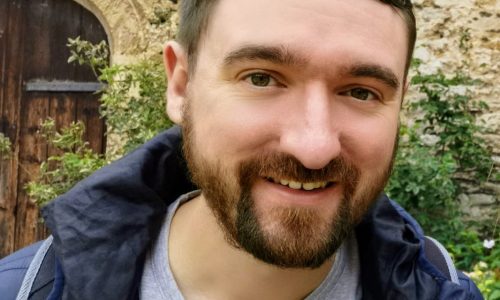
Working groups update: December 2020
- News
- December 22, 2020
Recent activities and progress of the different WGs in ENOVAT: Overview of ongoing work (Feb 2020 – Nov 2020)
- Working Group 1
Since the last Working Groups meeting in February in Albania, WG1 has been undertaking a wealth of work towards achieving its main two objectives:
- To review and evaluate the methodology and interpretive criteria used by veterinary diagnostic laboratories across Europe for pathogen identification and antimicrobial susceptibility testing.
- To map and compare the availability, structure, and evidence base of veterinary antimicrobial treatment guidelines in Europe.
These objectives will be achieved via two online surveys, namely the Diagnostic methodologies survey and the Treatment guidelines survey. To start with, we have applied for a central ethical approval for the project at University of Liverpool and which was obtained in July 2020. This central approval has been subsequently validated at the other two centres where data collected via the surveys will be stored (RVC, London and University of Bern, Switzerland). In addition, this central ethics approval is also being checked at national level in each ENOVAT participating country, with the support of ENOVAT country representatives. We now have confirmation that no further ethical approval is required for national surveys dissemination for most ENOVAT countries (very few are still to be confirmed).
Work has also been undertaken to design the two online surveys, which now have also been uploaded in an online platform (SurveyMonkey) and piloted by a sub-set of ENOVAT members; both are now completed and ready for dissemination.
During the ENOVAT online meeting at the end of November, we asked for support from ENOVAT members for distribution (and translations) of the surveys in their countries. This call generated many enthusiastic responses for which we are very grateful. We need the support of ENOVAT members for identification of suitable country national agencies (where these exist) and governmental or private diagnostic laboratories networks for the distribution of the Diagnostic procedures survey. Similarly, we need support to identify the best means for the treatment guidelines survey to reach veterinary practitioners, either through national veterinary associations, veterinary professional bodies, veterinary corporates or through larger international veterinary associations such as FVE and FECAVA.
We are confident that through the ENOVAT action we will achieve the long-standing goals of standardisations of microbiological procedures and optimisation of antimicrobial therapy in veterinary medicine. However, this will only be possible through the concerted efforts of all ENOVAT members and the willingness of professionals working in diagnostic laboratories and veterinary practitioners to participate in the surveys.
- Working Group 2
During the first year, the activities of WG2 were related to the general design of the strain database on veterinary pathogens stored across Europe, and to define the priority list of bacteria to include in the database. The priority list of bacteria was elaborated supported by the ENOVAT network, and synergies and collaboration with projects from the One Health Joint Program consortium, such as IMPART. There is one list for bacteria for which minimal inhibitory concentration (MIC) data for setting epidemiological cut off values (ECOFFs) are urgently needed. These ECOFFs are prerequisites for the calculation of clinical breakpoints, which is the task of WG 3. The second priority list deals with bacterial species which are still difficult to identify by MALDI-TOF MS. WG2 identified more than 300 bacterial species. There will be also an option for the laboratories to include special bacteria (open list).
To get an insight into the willingness and the conditions under which microbiological laboratories across Europe would submit data to the new European strain database, WG2 decided to send out a survey to European laboratories. As WG1 plan to send out a survey to European microbiological laboratories too, WG2 and WG1 collaborated concerning the administrative documents and the surveys.
It was decided the database format should be cheap, easy to work with and transferable to other software formats. Parameters to be part of the database were identified and included the usual information regarding bacterial isolate origin, year of isolation, method of identification, etc. and also include valuable information, such as: antimicrobial susceptibility data, identification of animal species These parameters would be either obligatory or voluntary, depending on what laboratories are willing to share.
WG2 has also engaged efforts to organize a training school on identification of bacteria by MALDI-TOF MS, but due to Covid-19 pandemic the planned training school was postponed. Planned STSMs for MIC determination were also postponed for the same reasons.
- Working Group 3
By February 2021 WG3 has to set the deliverable n. 2 of ENOVAT and report with a priority list of clinical breakpoints (CBPs), and strategy for obtaining required data.
The rules for prioritising CBP were decided in Tirana in February 2020 and were based on antibiotics, animal species, bacterial infections and pathogens.
For antibiotics it will be based on: levels of consumption; ”old” vs ”newer” antibiotics; PK data availability.
For animal species, CBPs will be defined for food-production and companion animals.
For bacterial infections, WG4 prioritization for treatment guidelines will be considered. CBPs will be defined only for systemic infections.
For pathogens, it will be consider the lack of CBPs comparing the data in CLSI-VAST, so as the availability of MIC distributions and WG2 prioritization for PD data availability.
The CBPs will be established where needs and available data overlap and with the contribution of WG2 and WG4. An initial longer list of CBPs will be drawn to select the final three.
Two almost finalised CBP based on VetCAST work will be in the list of the final 3:
- Doxycycline in pigs against Actinobacillus pleuropneumoniae and Pasteurella multocida
- Amoxicillin-clavulanic acid in dogs against Staphylococcus pseudintermedius, Staphylococcus aureus and Escherichia coli (for soft tissue and urinary tract infections).
A training school on “Pharmacokinetics for non kineticists” will be held in summer 2021 and the location is to be defined together with the decision towards a physical, on-line or hybrid meeting.
- Working Group 4
Since our first WG meeting in Tirana in November 2019 we have initiated and established drafting groups for 7 guidelines projects in collaboration with ESGVM. The guidelines projectss are as follows:
- Bovine respiratory disease, chaired by Luca Guardabassi and Lutz Schonecker;
- Bovine Mastitis, chaired by Volker Kromker and Aude Ferran;
- Poultry Colibacillosis, chaired by Alessandra Piccirillo and Jeroen deWulf;
- Postweaning Diarrhea in Piglets, chaired by Ken Pedersen and Ana Vale;
- Surgical Prophylaxis in Companion Animals chaired by Fergus Allerton and Scott Weese;
- Canine Acute Diarrhea, chaired by Lisbeth Rem Jessen and David Singleton
- Hospital Hygiene, chaired by Simone Schuller and Scott Weese.
Furthermore we have been invited to join the ISCAID guidelines on Canine Pyoderma and ENOVAT will be represented in that group by Luca Guardabassi and Scott Weese.
During the first grant period we have achieved our first task, establishment of an operating procedure for writing of veterinary practice guidelines on antimicrobial use. The operating procedure is adherent to the AGREE II tool and the GRADE approach and is available on the website.
Our main goal in the first grant period was to create a methodology taskforce of mainly early career investigators who would become pro-efficient in the methodology required to write high standard guidelines. We have achieved this goal and created a taskforce chaired by Luis Pedro Carmo and co-chaired by Marnie Brennan. The taskforce consist of 2-3 members from each drafting group, mainly early career investigators, who will do the systematic reviews necessary for evidence assessment.
In February 2021 we will be conducting a training school in the Grade approach for the methodology members. The training school is organized by ENOVAT and led by Luis and Marnie. The teachers are mainly human medicine epidemiologists from ESCMID who have kindly offered to share their expertise within human clinical practice guidelines with our veterinary taskforce.





